Climbing a volcano with inappropriate footware
Another 5000 meter (16,400ft) pass. Bolivia.
The city of La Paz is located in a huge valley. It's one of the least bikeable cities I've visited on this trip, due to stand still bus traffic and mercilessly steep cobblestone streets. Thankfully, bikes are allowed on the modern, extensive cable-car system.
Overlooking La Paz. "Linea roja" cable car. I met my childhood friend Elijah at the airport in La Paz, Bolivia and we cycled back to my Airbnb.Elijah just finished a kinesiology bachelor's degree and agreed to cycle with me for an undefined time frame. I've cycled with Elijah more than anyone else. My first cycling trips were his idea.
Elijah and I cycle touring in Oregon, USA 2017.La Paz is at 3600 meters (12,000 feet). An acclimitization ride (sometimes waking) overlooking La Paz.Eating Fricasé for the first time. A rich soup filled with pork chops.I met Kiefer (left) by accident on a street corner in La Paz. We hadn't met in person before then, but communicated a lot online regarding kayaking from Panama to Colombia. He's the only other person I've met who's done that kayak crossing.
In La Paz, Elijah and I went paragliding. Elijah had taken some classes in Spain and was excited to do it again.
The first afternoon leaving La Paz, I asked some policeman if it would be alright to camp in this area. The area was called "Valle De Las Animas" which means Valley of Souls. One of the policemen said it was pretty safe, but I should be careful of ghosts. With no hint of sarcasm.
That evening we camped in a canyon on the outskirts of a small community. Elijah forgot his sweater 200 meters up the canyon after going to the bathroom, and when he went back to fetch it, it was gone. The sweater wasn't a big deal, but his phone was in the pocket, so we went door to door asking if anyone had seen it. No luck, and we asked again in the morning, without success. Elijah thinks it was taken by an older Bolivian woman, but I like to believe it was a ghost.
Elijah used my backup smartphone for the next month.
The next 10 days of riding were cold, dry, mountainous, with a ton of climbing.
Roadblock protests are common in Bolivia. Luckily they allowed Elijah and I to pass on our bicycles, and we enjoyed 20km of empty highway on our way into Oruro, Bolivia.
In preparation for the empty desert of SW Bolivia, Elijah and I indulged heavily on inexpensive street food: Salted llama, fried pork, fish and rice, chicken and potatoes, cake, cake, cake, and ‘trancapechos’ - an all-out sandwich, which translates to ‘chest-blocker’.
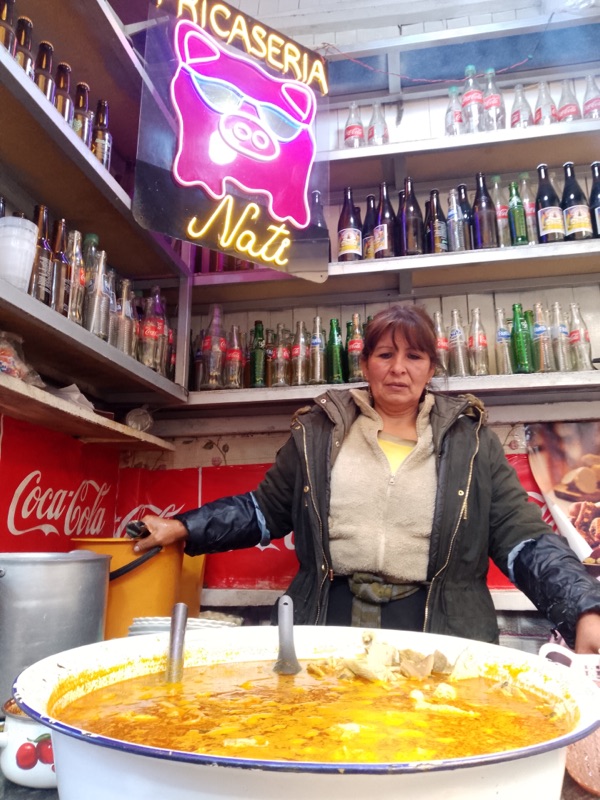
”Fricaseria Nati”.
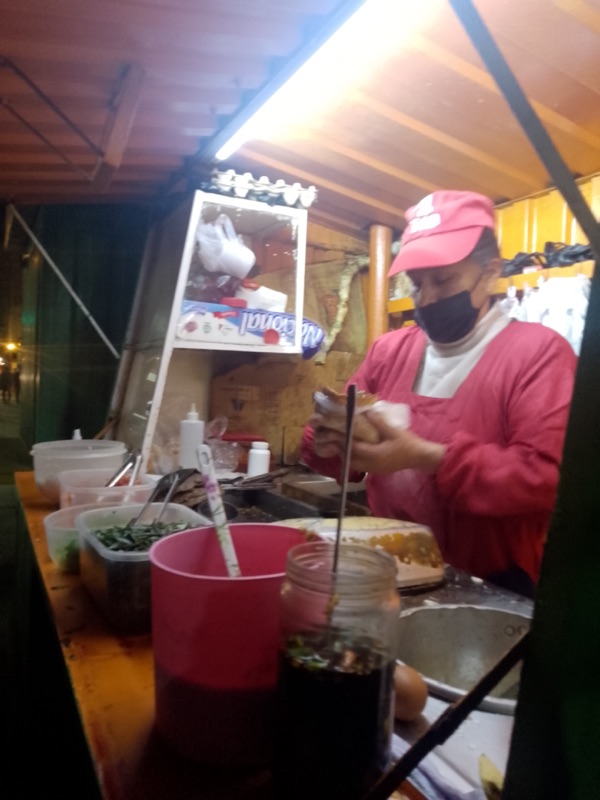
Waiting in line for a trancapecho.
Unfortunately, the true cost was higher than anticipated, and within an hour of leaving town, Elijah fell ill. We flagged down a ride-share van and loaded his bicycle, but before they made it back to the city center, he had filled a small pannier with partially digested pork.
I returned by bicycle, unscathed so far, and ran into a woman on the street corner who I’d met the night before outside our hostel.
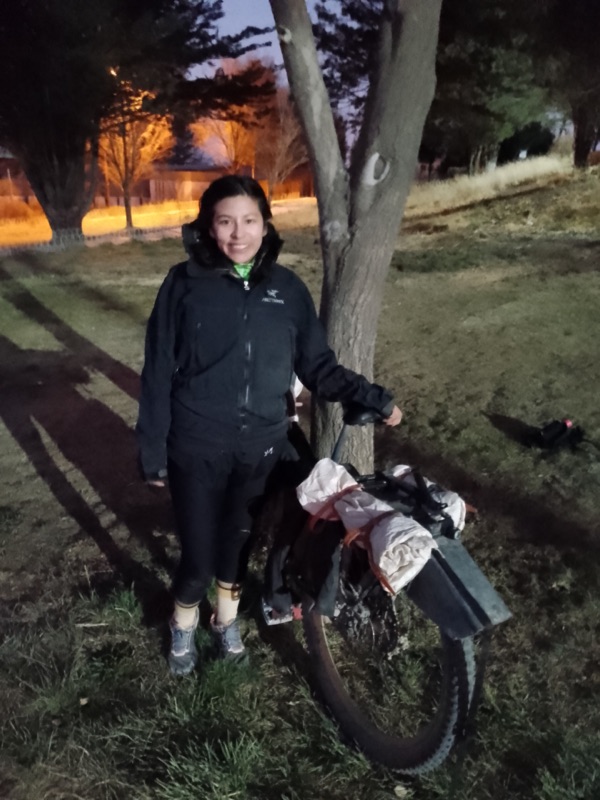
Pamela and my bicycle.
Pamela showed me around her home town of Oruro for a few days while Elijah nursed his intestines back to health.
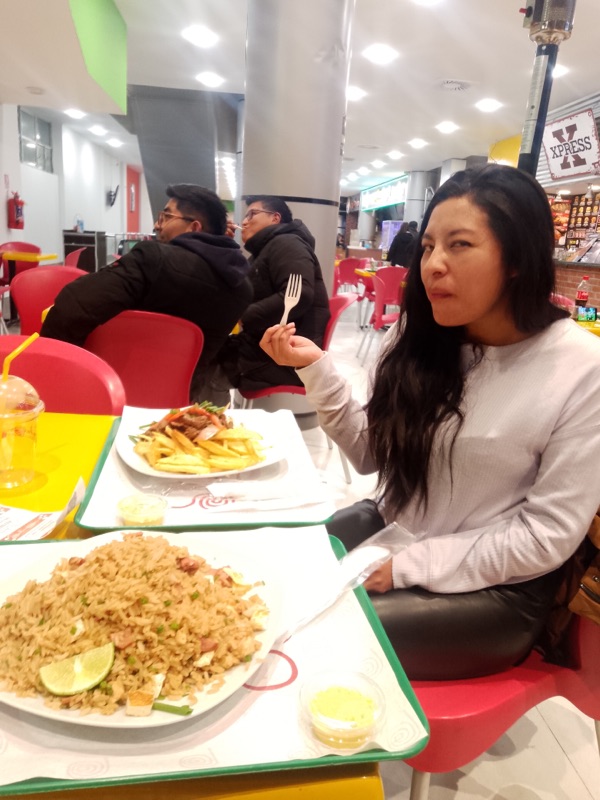
Pamela and I eating Peruvian food in Oruro, Bolivia.
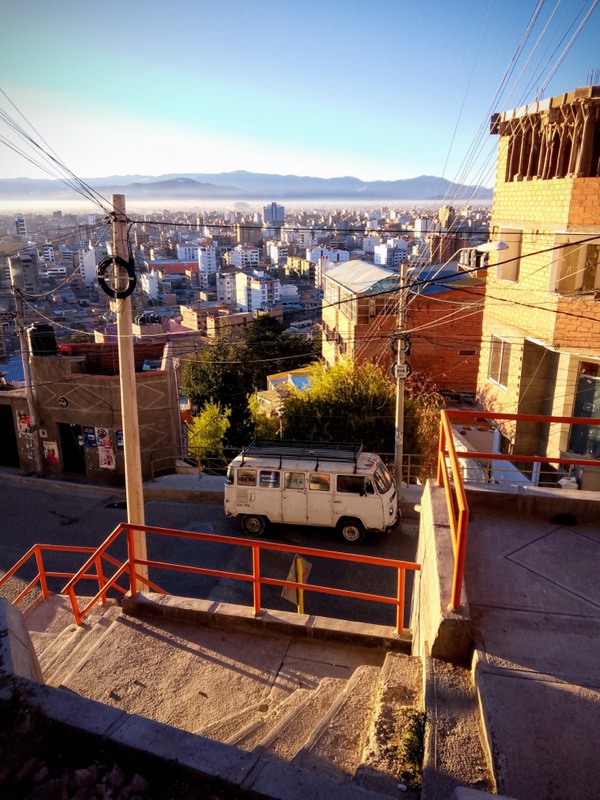
Overlooking Oruro.
Eventually Elijah and I left Oruro, and I began the longest duration without since I’ve ever had internet. As we rolled towards the sandy southwest corner of the country, Bolivia just got drier and flatter and colder.
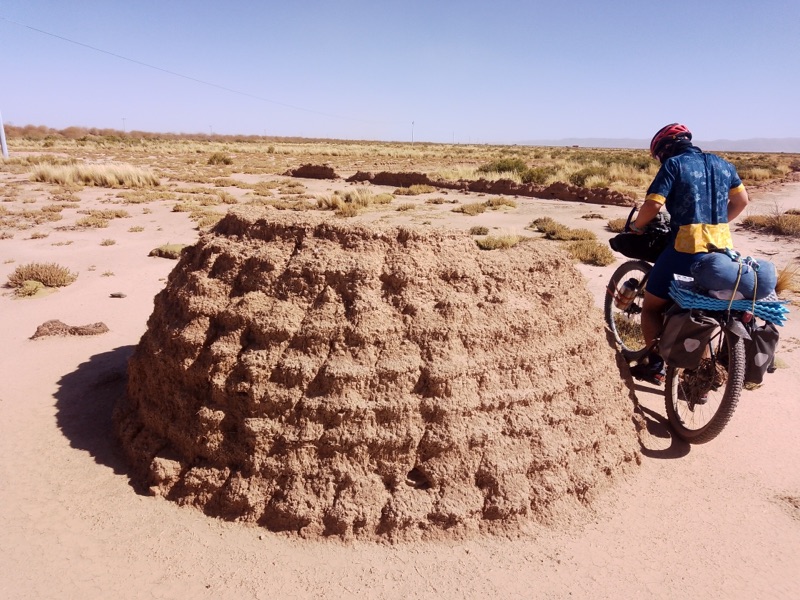
Near Oruro.
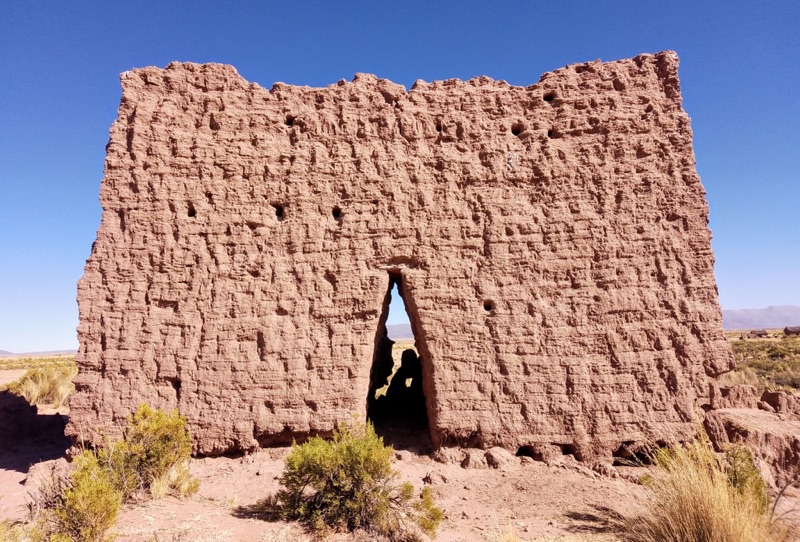
I’d heard something about abandoned indigenous tombs with a vagina-shaped opening facing the rising sun. Something about a rebirth. Perhaps this is one of them.
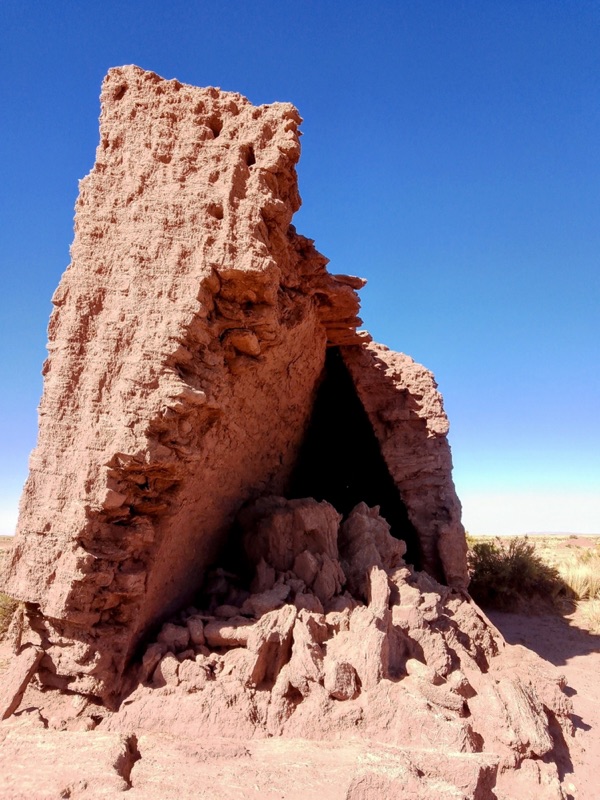
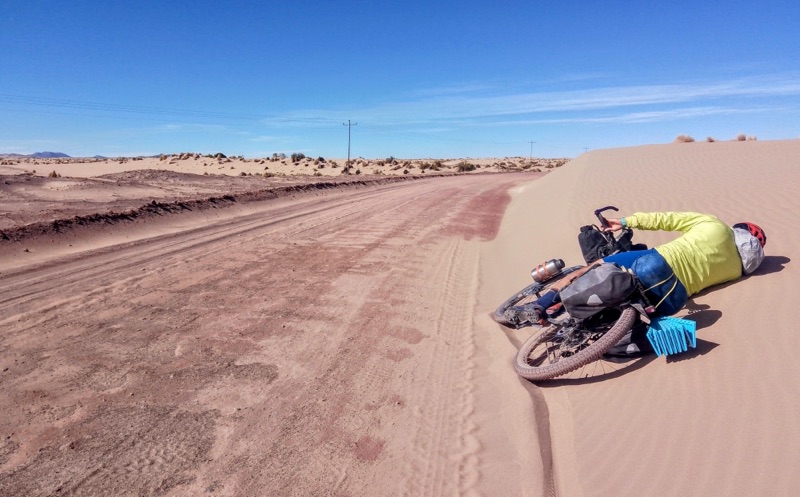
The sand and wind team up to slowly undo the road.
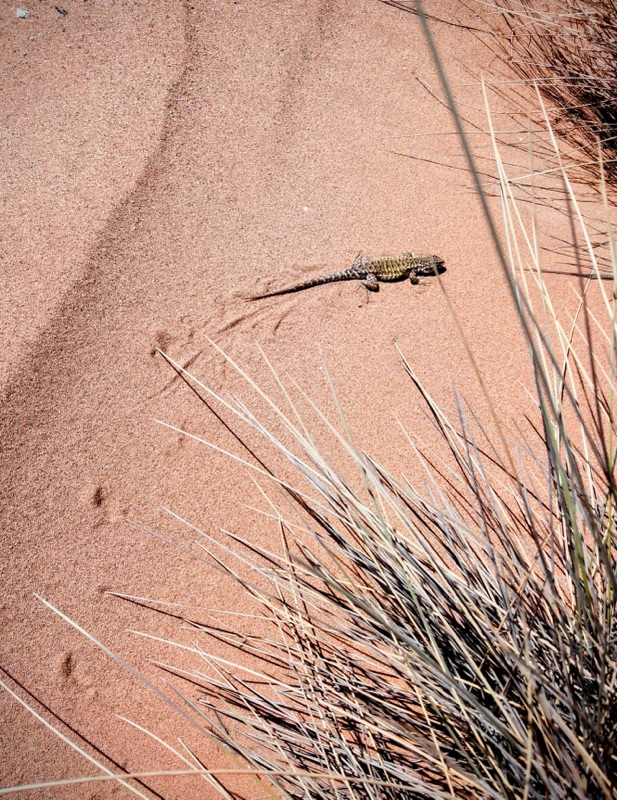
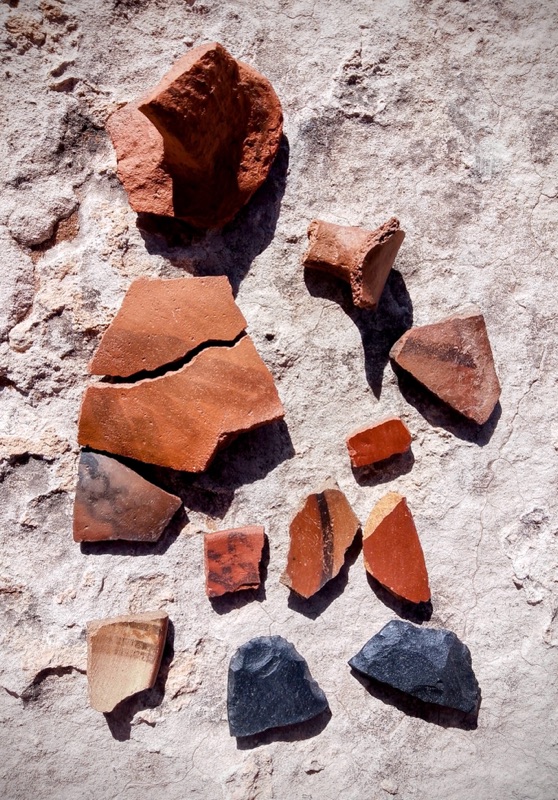
Pottery shards. The pieces on the bottom right looked unmistakably like stone tools to me.
The route through SW Bolivia.
South of Oruro, we traversed the barren, sandy, salty altiplano. This region is had very little services so we carried food for 5 days at a time and water for 3 days at a time.
Elijah searching for a cell signal. We went almost two weeks without internet.The Salar de Uyuni in SW Bolivia is the lagest salt flat in the world. At 10,000 square kilometers, it's visible from outer space. Cycling across it was a highlight of my trip.
The beauty of extreme emptiness surprises me.The surface, pure salt, is rock hard and crunchy sounding. The color and sound reminded me a lot of snow, and I was surprised every time I touched it and it wasn't cold.
Elijah and I took turns riding with our eyes closed for 30 minutes.In a place this empty, a dead bird is unusual enough to merit a selfie.
Camping on the Salar.
SW Bolivia was very cold this time of year, and the Salar especially so. My theory is that the salt reflects sunlight so well that it can't heat up during the day. On dark land, the earth stores sunlight, keeping you warmer during the night.
I didn't have a thermometer but from experience I'd estimate it reached -15°C (5°F) at night.
Elijah salting his lunch.Isla Tortuga.
During the wet season, the salt flat floods with a few inches of water, becoming a 80 mile mirror, and bad for bike touring. So it's technically a lake. And this hill is technically an island.
We left the salt flats, but the terrain remained pretty flat.













































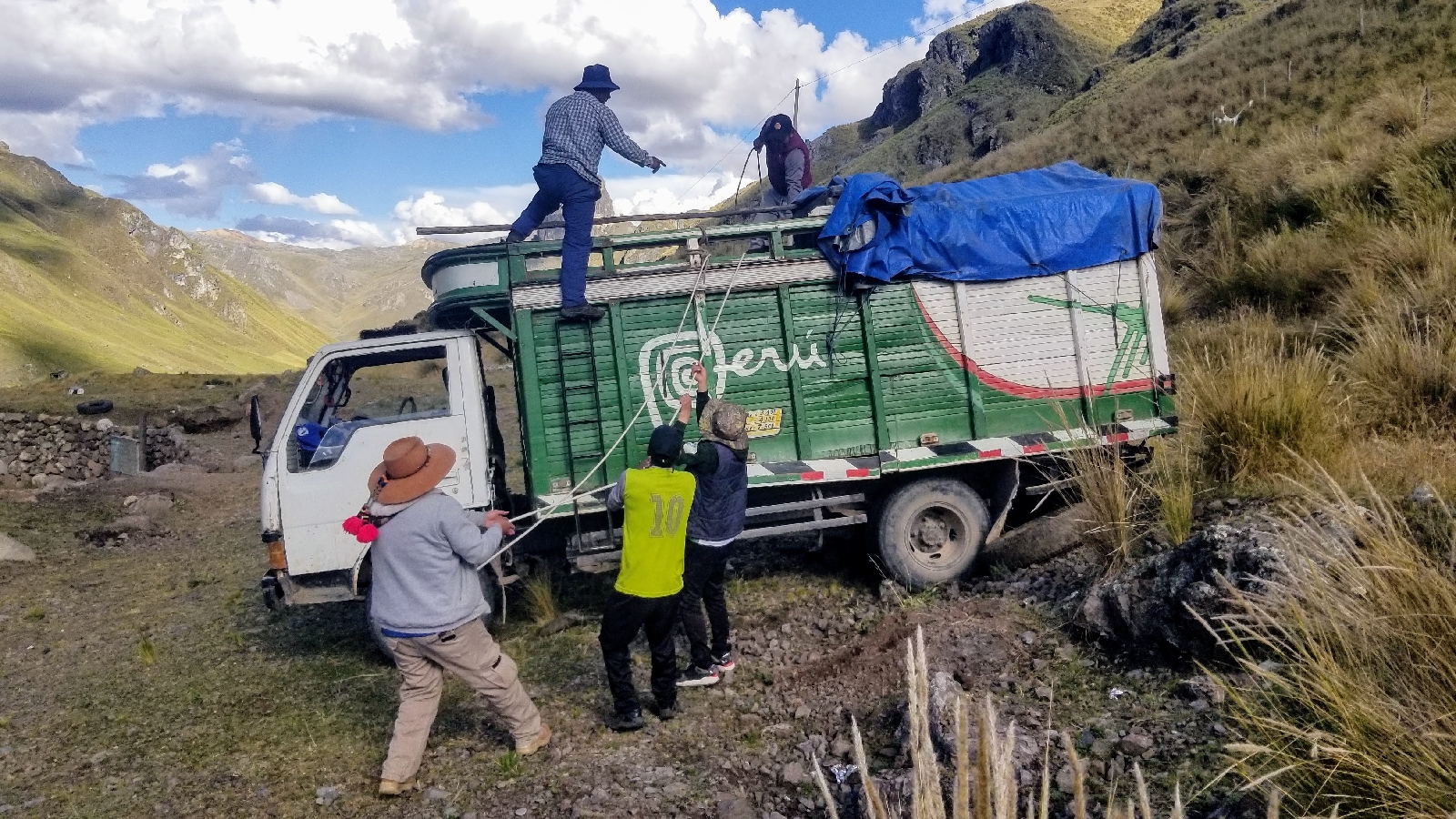
Comments
Post a Comment